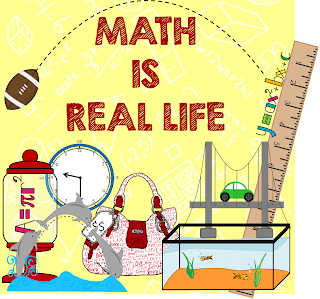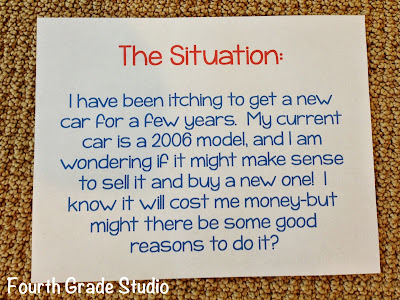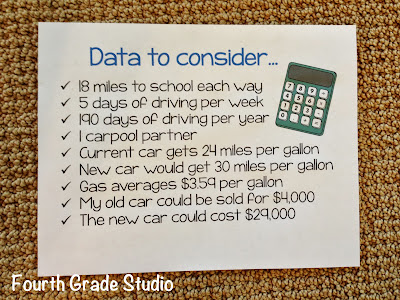“When are we EVER going to use THIS?!” This statement… this one little statement has caused fear and panic to run through MANY a math teacher’s veins! It’s not like you won’t use math in the real world… but sometimes as soon as that question is uttered we have a mind-melting-moment and cannot come up with just the right words to say.
So to help give you some real world, possibly out of the box thinking type ideas, my Book Blogging Buddies and I have come up with an idea that we think will be
A-MAY-ZING!!
A-MAY-ZING!!
Presenting….. math IS real life! A monthly REAL WORLD math blog link-up hosted by 4mulaFun, Fourth Grade Studio, Teaching to Inspire in 5th, AND MissMathDork,
So here is how this will work…. on the FIRST Wednesday of every month (today is the first one!!!) all four of us will create a blog post about how we have RECENTLY used math in our real life – not just counting or time…. but topics that your kiddos will be able to relate to at various level of upper elementary and middle school. Then at the bottom of all four of our blogs we will have a link-up that will sync between all four blogs. This means you link up to one of us and it will be visible on all 4 blogs!
Are you ready for this?
Today I wanted to share with you not just an example of “real life math”, but also a way you can take ANY math situation in the real world and turn it into a very quick and easy math lesson or extension for more capable students. Here’s my situation–and I’ll bet you can think of a million other examples of how this activity could be done with very little planning or prep! In fact–that is the beauty of it. The goal of the task is to come up with some good quality math work, but the real value here is the application of the Standards for Mathematical Practice . . . from being able to determine what information we have . . . to manipulating it with precision . . . to drawing conclusions and looking for patterns . . . and more!
So . . . here is my “situation”.
 |
| You can’t see the dents. I took it from its “good side” . . . hehe |
So–you see how “real world” this is. It could be wanting a new video game system . . . or a trip to Florida . . . or a year at Harvard . . . or a new bike. After my day today–I could write one about wanting a pizza delivered to my door.
So where is the math? Check it out.
I simply typed up all the “number stuff” I could think of that might impact my decision. It would be easy enough to do this (took me 3 minutes) and to share it with your class and/or a small group. Students might have questions like “Why is your carpool partner on there?” (I would ask–why do YOU think so?) or “What does “averages” mean? (I would ask–what do YOU think) until students have a decent understanding of the facts on the page. So you might be thinking–what’s the answer going to be? How are you ever going to get ALL your students to come up with it? Can fourth graders really handle this?
Here’s the beauty. There is no right answer.
(Well . . . for me the right answer would be for some benevolent pro-education billionaire to come reward me with a new car to thank me for my service to the community but this is REAL LIFE–so read on) So here is what I have prepared next.
Do you see how differentiated it is–with no work on my part at all? Do you see how ACCESSIBLE this problem is? I truly believe that every single student in my class could make statements about the data–in varying levels of sophistication. I believe each could come up with information they WISH they had. I believe each could come up with a recommendation and defend it–in varying levels of sophistication.
Could they work alone? Yes.
Could they work in teams? Yes.
Could they design a formal poster showcasing their findings and present to the class? Yes.
Could you set the timer for 15 minutes and simply have them see what they can recommend after that amount of time? Yes.
Could they write me a letter and attach the math to prove their recommendations? Yes.
Could I do this as a whole class problem solving activity? Yes.
So I challenge you to constantly be thinking of ways to grab onto data/numbers you find in the real world and find ways to get students studying them, asking questions about them, and drawing conclusions about them. I guarantee they will love it–and the application of the skills they have been taught will be cementing them in their brains!
We are so incredibly excited to read about how YOU use MATH in your REAL LIFE!!!
document.write(‘









